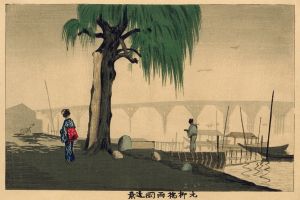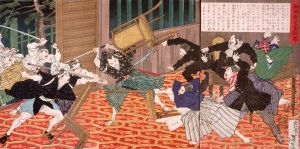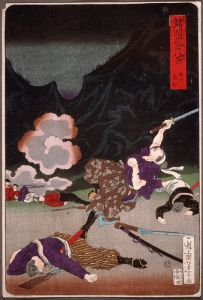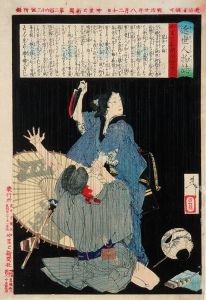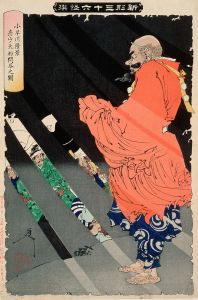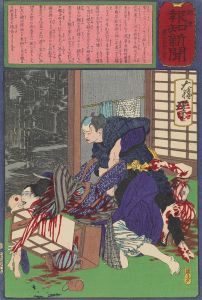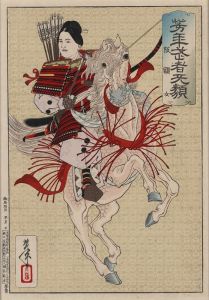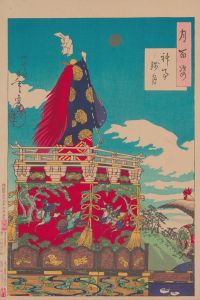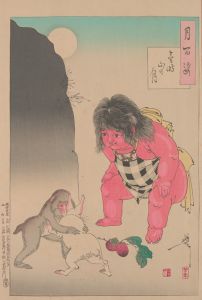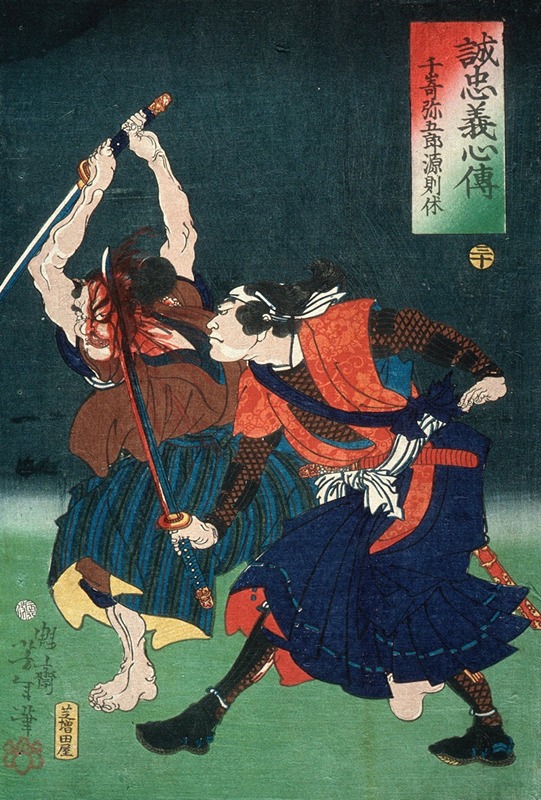
Senzaki Yagorō Fujiwara no Noriyasu
A hand-painted replica of Tsukioka Yoshitoshi’s masterpiece Senzaki Yagorō Fujiwara no Noriyasu, meticulously crafted by professional artists to capture the true essence of the original. Each piece is created with museum-quality canvas and rare mineral pigments, carefully painted by experienced artists with delicate brushstrokes and rich, layered colors to perfectly recreate the texture of the original artwork. Unlike machine-printed reproductions, this hand-painted version brings the painting to life, infused with the artist’s emotions and skill in every stroke. Whether for personal collection or home decoration, it instantly elevates the artistic atmosphere of any space.
Tsukioka Yoshitoshi was a prominent Japanese artist known for his woodblock prints and paintings during the late Edo and early Meiji periods. He is often celebrated for his innovative approach to traditional ukiyo-e art, and his works frequently depicted historical scenes, kabuki actors, beautiful women, and supernatural themes. One of his notable works is the depiction of Senzaki Yagorō Fujiwara no Noriyasu, a character from Japanese history.
Senzaki Yagorō Fujiwara no Noriyasu is a figure associated with the legendary tale of the Forty-seven Ronin, also known as the Ako incident, which is one of the most famous stories in Japanese culture. This historical event took place in the early 18th century and involved a group of samurai who became ronin (masterless samurai) after their lord, Asano Naganori, was compelled to commit seppuku (ritual suicide) for assaulting a court official named Kira Yoshinaka. The ronin, led by Oishi Kuranosuke, sought to avenge their master's death by plotting and executing a successful attack on Kira's mansion, ultimately killing him. This act of loyalty and vengeance became a celebrated story of samurai honor and duty.
Yoshitoshi's depiction of Senzaki Yagorō Fujiwara no Noriyasu is part of his series of prints that illustrate the various characters involved in the Forty-seven Ronin tale. Yoshitoshi's work is known for its dramatic intensity and attention to detail, capturing the emotional depth and complexity of the characters he portrayed. His prints often reflect a deep understanding of human nature and the moral dilemmas faced by the samurai.
In this particular artwork, Yoshitoshi employs his signature style, which combines traditional ukiyo-e techniques with a more modern and expressive approach. His use of vivid colors and dynamic compositions helps to convey the tension and drama of the historical narrative. Yoshitoshi was also known for his ability to capture the psychological states of his subjects, and this is evident in his portrayal of Senzaki Yagorō Fujiwara no Noriyasu, who is depicted with a sense of determination and resolve.
Yoshitoshi's work during this period was instrumental in the transition of Japanese art from the Edo period to the Meiji era, as he incorporated Western artistic influences while maintaining the essence of traditional Japanese aesthetics. His prints of the Forty-seven Ronin, including the depiction of Senzaki Yagorō Fujiwara no Noriyasu, are considered some of his finest achievements and continue to be highly regarded by art historians and collectors.
Overall, Tsukioka Yoshitoshi's portrayal of Senzaki Yagorō Fujiwara no Noriyasu is a testament to his skill as an artist and his ability to bring historical and legendary figures to life through his art. His work not only preserves the cultural heritage of Japan but also offers insight into the values and ideals of the samurai era.





